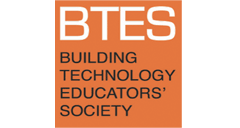Developing Evidence-based Tools and Resources for Material Selection
Author ORCID Identifier
DOI
https://doi.org/10.7275/t26c-9838
Abstract
Building construction costs over a trillion dollars and accounts for half of the non-renewable resources consumed on an annual basis in the US, with materials and equipment comprising three-quarters of these costs. While not the final arbiters, architects play a critical role in determining what materials are specified for construction projects. Material selection in architecture has historically been taught through high- level lectures accompanied by empirical, evidence- based exercises and precedent studies during school followed by “in the field” experience for interns in practice. While there are many great resources that discuss material properties and analyze the use of specific materials in iconic projects through a case study approach, there is a significant gap in the literature and support materials when it comes to how and why materials are selected in the first place. With the rapidly evolving nature of digital tools, ever-expanding range of materials available on the market, and increasing standards for building performance, there has never been a greater need for comprehensive resources to support architects’ and educators’ understanding of the interconnected factors that influence and support informed decisions that are justifiable to all project stakeholders.
This paper presents the problem-setting process; findings from first-hand interviews with almost twenty practitioners at leading firms in New York City, Chicago, and San Francisco that have been recognized for their thoughtful use of materials; and plans for the next targeted phase of the work. University research seed funding supported the initial phase of this research, which was designed to validate assumptions about the unique nature of the material selection process. We plan that this study will serve as the first step toward developing codified resources to support a more evidence-based approach in education and practice.
Recommended Citation
Carraher, Erin and Leither, Luke
(2019)
"Developing Evidence-based Tools and Resources for Material Selection,"
Building Technology Educator's Society: Vol. 2019
Caryn Brause, Peggi L. Clouston, Naomi Darling (Eds.), Amherst, MA, 2019.
https://doi.org/10.7275/t26c-9838
Available at:
https://scholarworks.umass.edu/btes/vol2019/iss1/2

